A coming of age for gender in global health
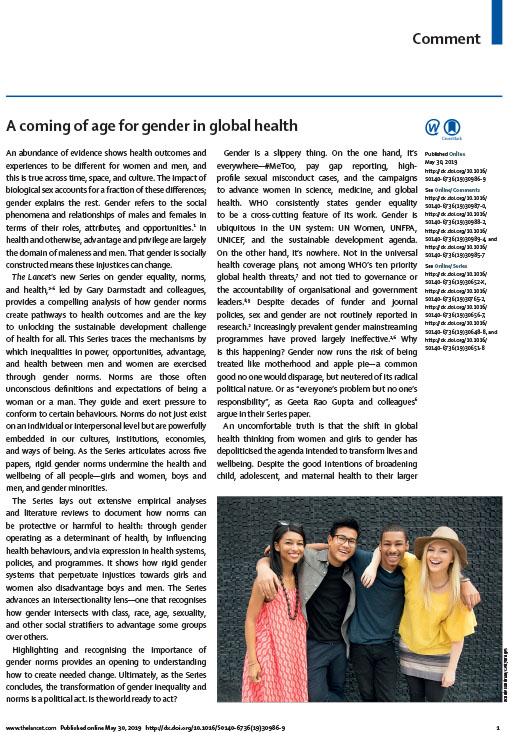
An abundance of evidence shows health outcomes and experiences to be different for women and men, and this is true across time, space, and culture. The impact of biological sex accounts for a fraction of these differences; gender explains the rest. Gender refers to the social phenomena and relationships of males and females in terms […]
Allowing Men to Care
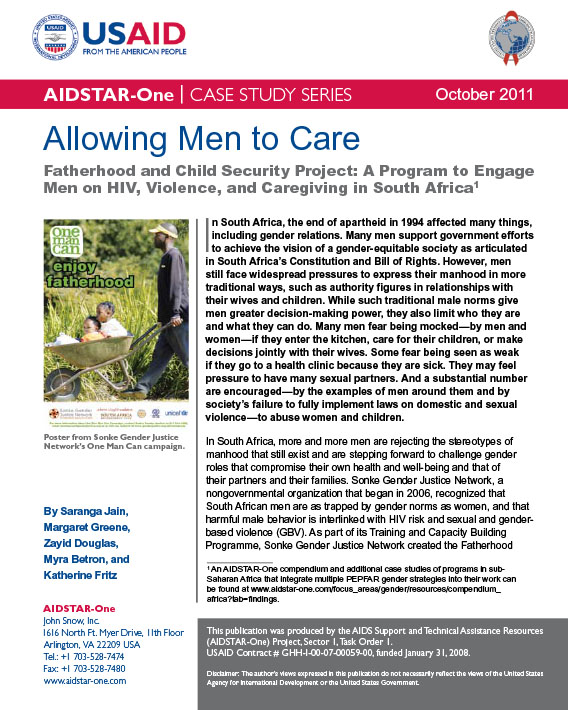
In South Africa, the end of apartheid in 1994 affected many things, including gender relations. Many men support government efforts to achieve the vision of a gender-equitable society as articulated in South Africa’s Constitution and Bill of Rights. However, men still face widespread pressures to express their manhood in more traditional ways, such as authority […]
Strategies for engaging men in HIV services
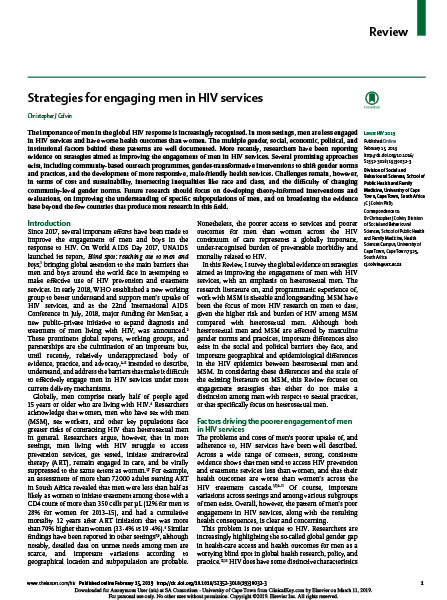
The importance of men in the global HIV response is increasingly recognised. In most settings, men are less engaged in HIV services and have worse health outcomes than women. The multiple gender, social, economic, political, and institutional factors behind these patterns are well documented. More recently, researchers have been reporting evidence on strategies aimed at […]
Structural drivers and social protection: mechanisms of HIV risk and HIV prevention for South African adolescents.
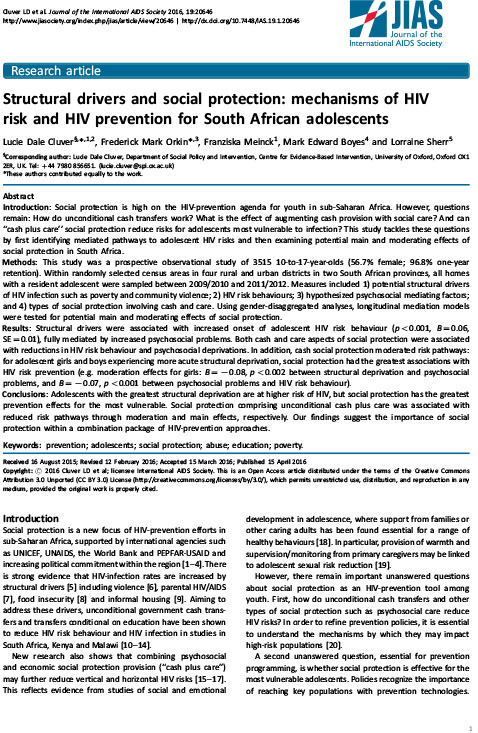
Introduction Social protection is high on the HIV-prevention agenda for youth in sub-Saharan Africa. However, questions remain: How do unconditional cash transfers work? What is the effect of augmenting cash provision with social care? And can “cash plus care” social protection reduce risks for adolescents most vulnerable to infection? This study tackles these questions by […]
Reaching key adolescent populations
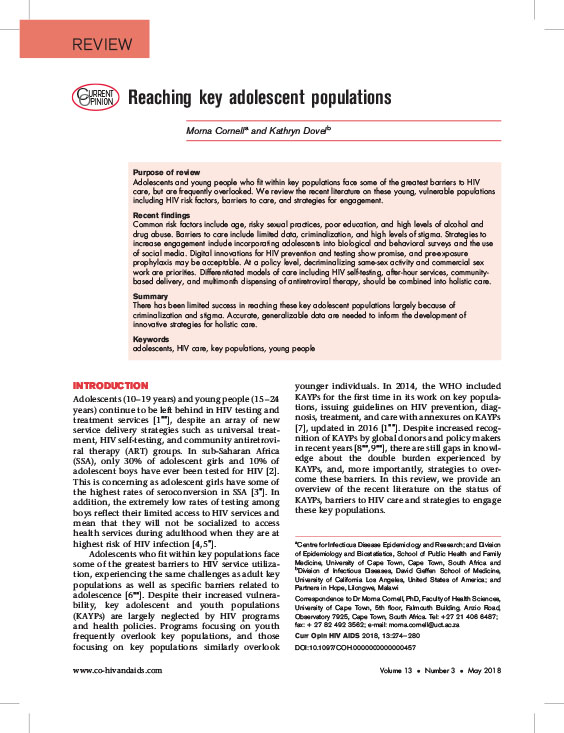
Purpose of review Adolescents and young people who fit within key populations face some of the greatest barriers to HIV care, but are frequently overlooked. We review the recent literature on these young, vulnerable populations including HIV risk factors, barriers to care and strategies for engagement. Recent findings Common risk factors include age, risky sexual […]
Briefing on men’s health for WHO gender, equity and human rights unit
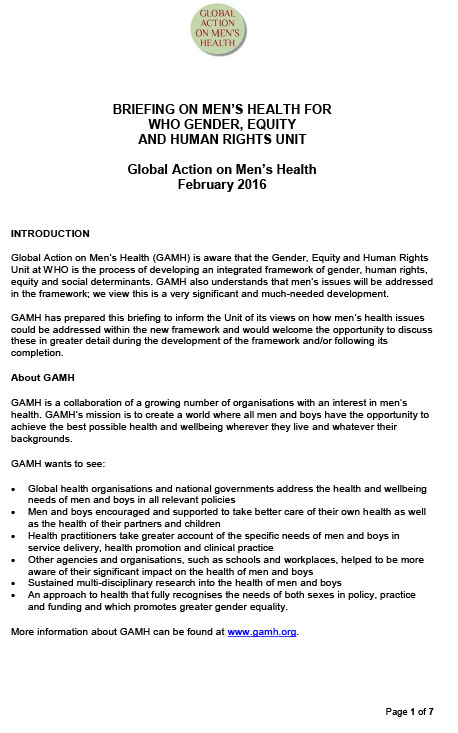
Global Action on Men’s Health (GAMH) is aware that the Gender, Equity and Human Rights Unit at WHO is the process of developing an integrated framework of gender, human rights, equity and social determinants. GAMH also understands that men’s issues will be addressed in the framework; we view this is a very significant and much-needed […]
Sex in Geneva, sex in Lilongwe, and sex in Balaka
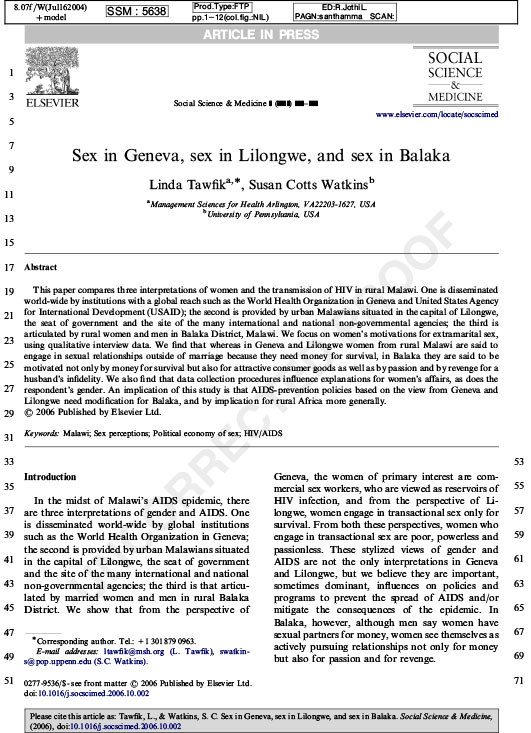
This paper compares three interpretations of women and the transmission of HIV in rural Malawi. One is disseminated world-wide by institutions with a global reach such as the World Health Organization in Geneva and United States Agency for International Development (USAID); the second is provided by urban Malawians situated in the capital of Lilongwe, the […]
The men’s health gap: men must be included in the global health equity agenda
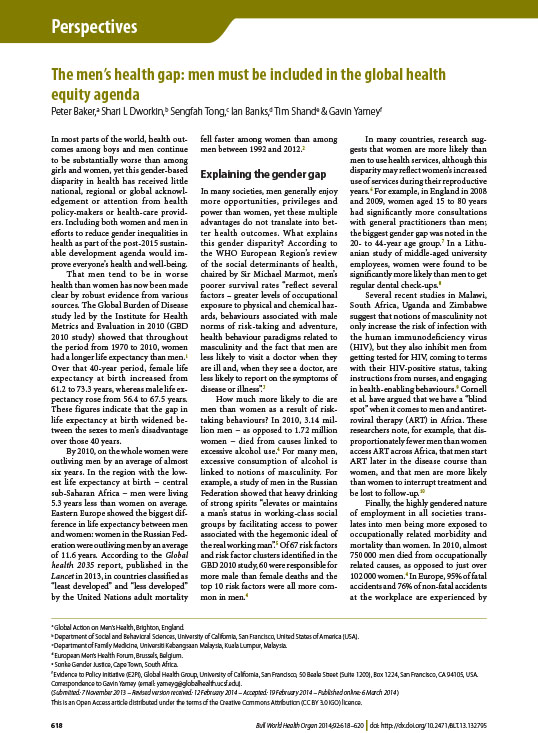
In most parts of the world, health outcomes among boys and men continue to be substantially worse than among girls and women, yet this gender-based disparity in health has received little national, regional or global acknowledgement or attention from health policy-makers or health-care providers. Including both women and men in efforts to reduce gender inequalities […]
Seek, Test and Disclose: knowledge of HIV testing and serostatus among high-risk couples in a South African township
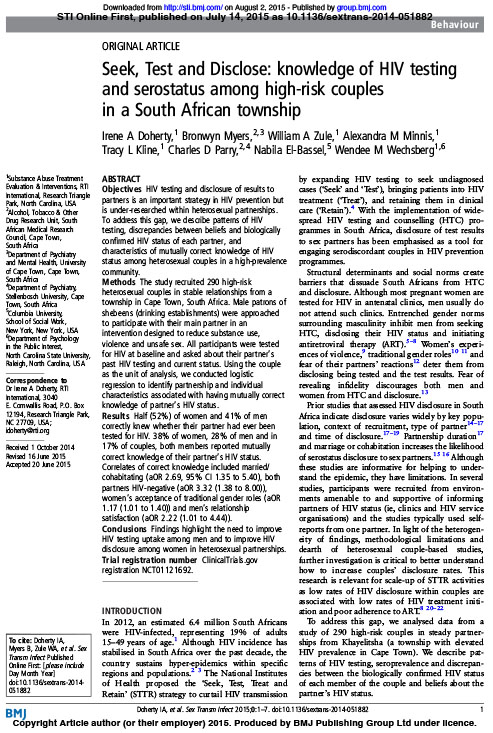
Objectives HIV testing and disclosure of results to partners is an important strategy in HIV prevention but is under-researched within heterosexual partnerships. To address this gap, we describe patterns of HIV testing, discrepancies between beliefs and biologically confirmed HIV status of each partner, and characteristics of mutually correct knowledge of HIV status among heterosexual couples in […]
Modelling the demographic impact of HIV/AIDS in South Africa and the likely impact of interventions
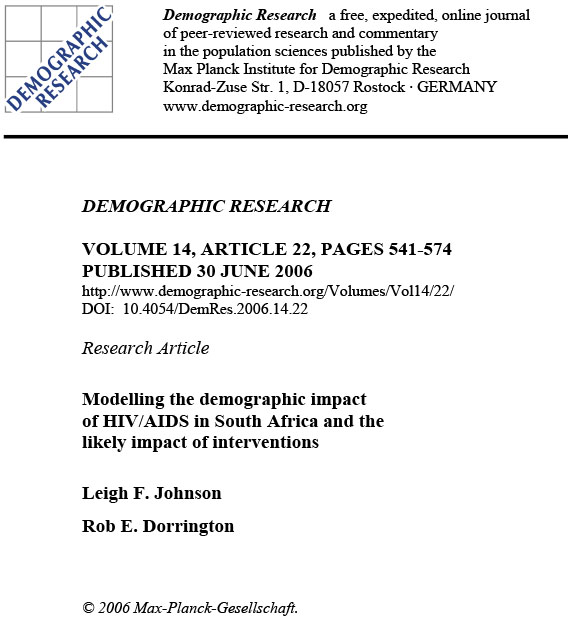
This paper describes an approach to incorporating the impact of HIV/AIDS and the effects of HIV/AIDS prevention and treatment programmes into a cohort component projection model of the South African population. The modelled HIV-positive population is divided into clinical and treatment stages, and it is demonstrated that the age profile and morbidity profile of the […]


